Time & Again: Designer Corinne Acampora’s Strategies for Updating Classic Design
July 23, 2022
Sponsored Content
Text by Maria LaPiana
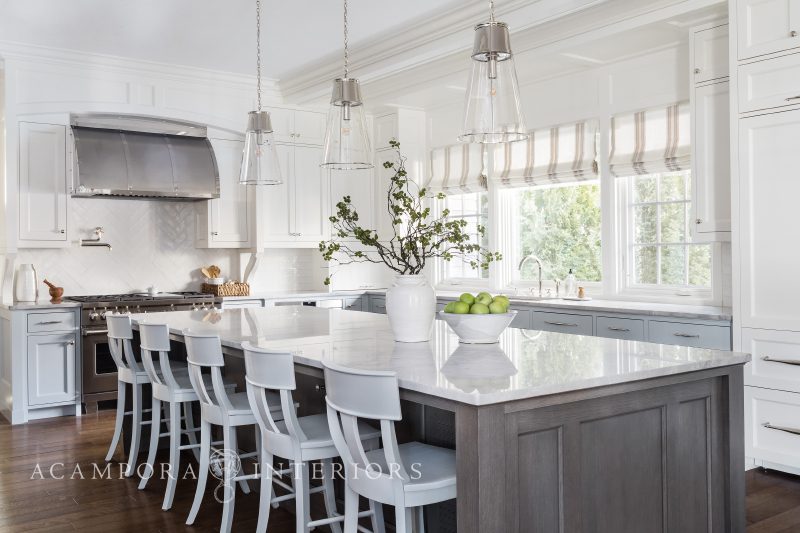
Photograph by Joyelle West
In almost any circumstance, the word “classic” implies quality and lasting worth. In the world of interiors, however, if uttered in the same breath as “traditional,” classic can sometimes be construed as formal or fussy. That’s why Corinne Acampora prefers “timeless” when she describes her work.
As principal designer and founder of Acampora Interiors in Framingham, Massachusetts, Acampora strives to create “warm, elegant, and livable spaces” that not only stand the test of time but also “reflect the lifestyles of those who call them home.” To make that happen, she routinely turns to essential elements of timeless design, then kicks them up a notch with unexpected moves. And she always, always starts fresh. “When we design, it’s never copy and paste, says Acampora. “We start from scratch every time.”
Key Elements of Timeless Design
Symmetry and Balance
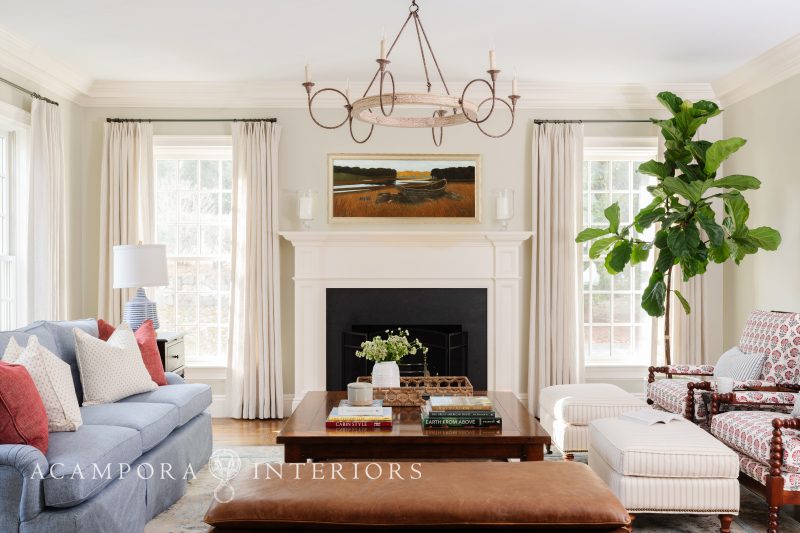
Photograph by Jessica Delaney
No matter the scope of a project, Acampora considers symmetry and balance first. “They bring an element of calm and simplicity to design, and they can be relied on to make a space feel sophisticated,” she says. “If you can’t achieve symmetry, then you have to aim for a sense of balance.”
Neutrals Rule
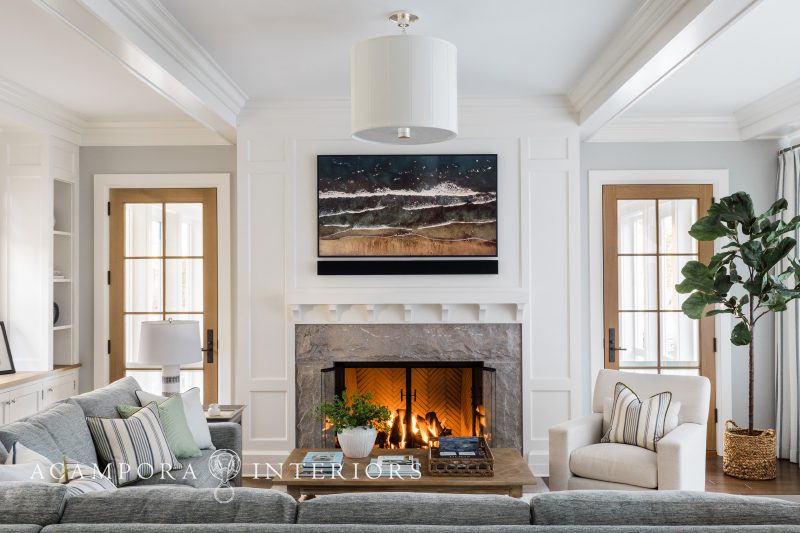
Photograph by Joyelle West
The backdrop of a neutral palette immediately sets the scene for a timeless space—but it should be stimulating, not yawn-inducing. “It’s important to emphasize that neutrals shouldn’t be boring,” says Acampora. People often misunderstand neutrals and how to use them; they’re not all griege. “If the vibe is coastal, for example, we’ll look to nature and incorporate greens, taupes, and sandy colors,” says the designer. “Blues can be neutrals, too.” Remember, a neutral doesn’t have to be pale, or light and airy. Says the designer: “Saturation of color is something many don’t consider. Black, for instance, can be the ultimate neutral.”
Pattern Play
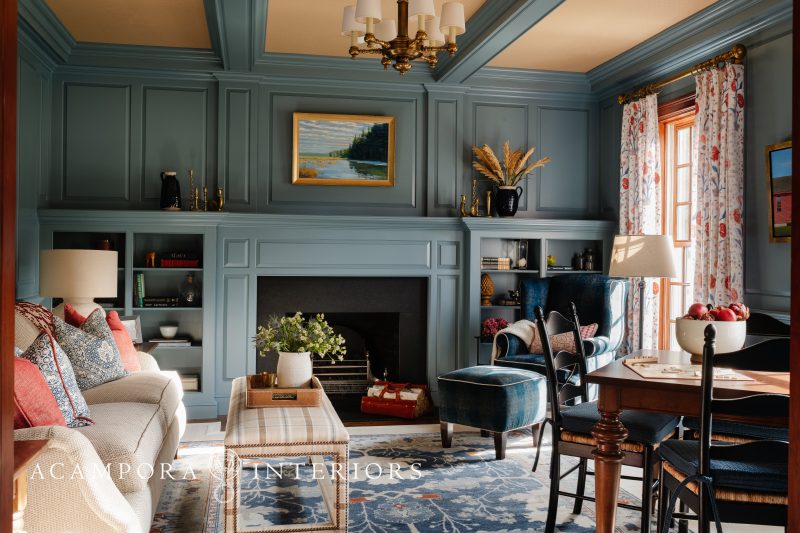
Photograph by Jessica Delaney
Whether it’s a floral and a stripe or a polka dot and a chevron, many people are afraid of mixing patterns. But pattern play is a tried-and-true technique that adds elegance to a space. “Patterns can work together as long as you keep harmony, scale, and texture in mind,” says Acampora. Whether tone-on-tone or in the same color family, they can have a distinctive effect. Her design team always considers the overall look and feel of a room, starting with a color palette and building a pattern story around it. “That said, we will choose fabrics that can be swapped out easily, because we know that clients do change their minds,” she says.
Natural Materials
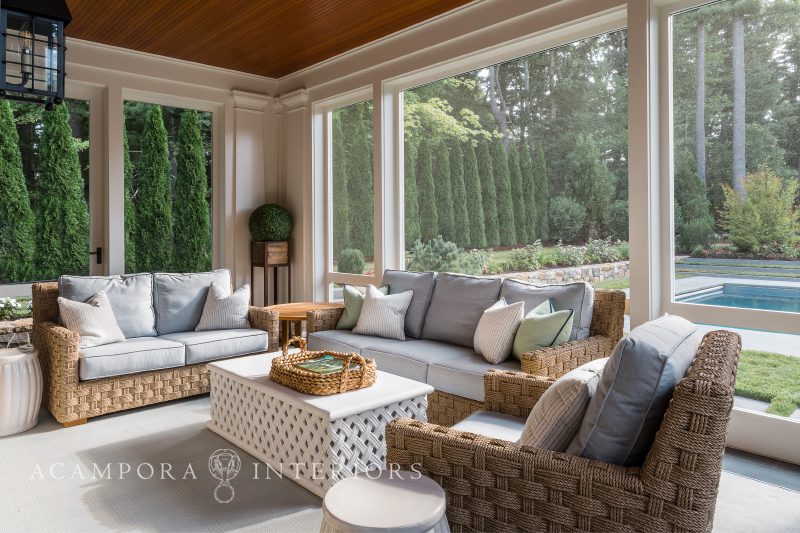
Photograph by Joyelle West
The use of natural and organic materials in interior design has been around forever—with good reason. “They’re timeless in and of themselves,” says Acampora. “Wood, rattan, cotton, linen (whether formal or relaxed) and the like … they’re hardworking materials that bring the outside in—but they always need to be functional and of the highest quality.”
Add Art
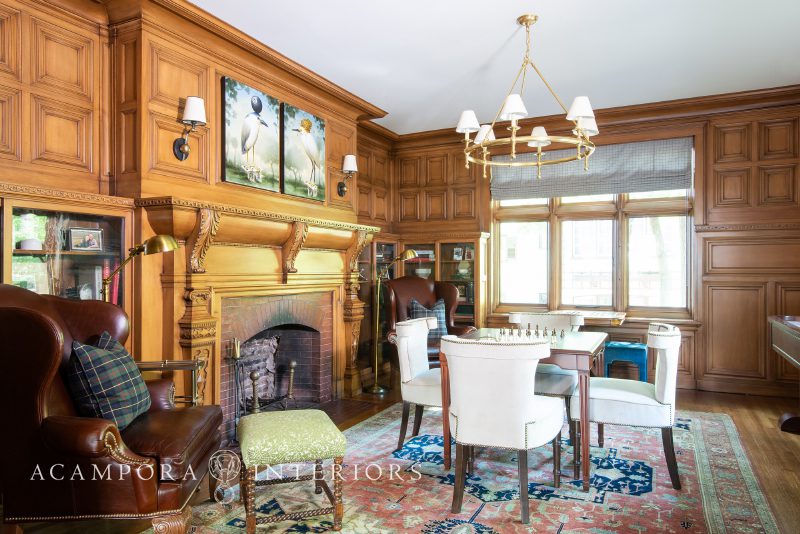
Photograph by Kindra Clineff
How do you amp up timeless design? By mixing in something unexpected. “Art is an amazing way to make a room feel fresh,” says Acampora, “as long as it’s joyful and surprising.” Her team worked on an antique home in Brookline, Massachusetts, turning a formal library into game room. While a traditional still life might have been appropriate for the space, they chose a pair of whimsical oil paintings for over the mantel instead. The paintings depict frisky birds standing on playing cards, one with a billiard ball on its head. “I absolutely love them. And love how perfect they are for the room,” says the designer.
Rethink Lighting
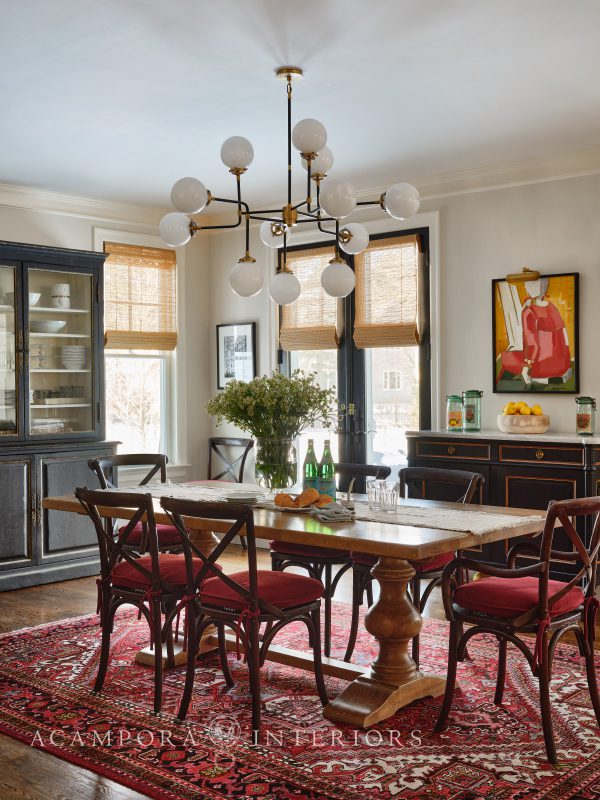
Photograph by Read McKendree
Another way to refresh a room is to have some fun with lighting, says Acampora. Hang an oversized antique chandelier where one expects to see something stylish but standard. For a client who had lived in New York City and loved it, the designer recreated a bistro feeling by sourcing a showstopping fixture with multiple globes to hang over the kitchen table.
Consider Statement Walls
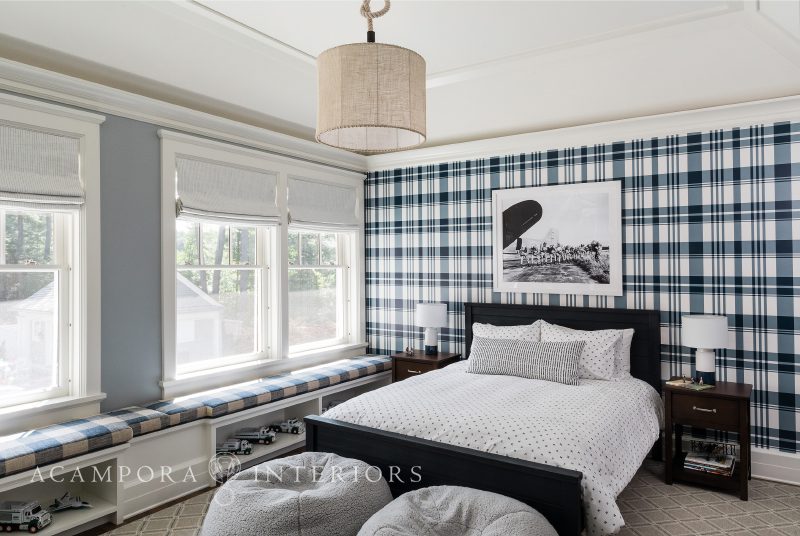
Photograph by Joyelle West
Acampora often takes cues from her clients to create statement walls that add an element of surprise. She once transformed a neutral space with a bold, saturated plaid wall; another time she created a gallery of striking black-and-white images in a home whose owners shied away from color. For clients who loved animals and nature, she created “a dramatic, jewel of a room filled with flowers and birds in shades of turquoise.”
Getting Personal with Accessories
There are countless ways to make timeless design feel personal, to create a true reflection of the people who live in a home. “It’s all in the details,” says Acampora. “During the design process, it’s important for our team to really get to know our clients, understanding their personal interests, lifestyles, and goals.” She typically sources accents and furnishings that reflect those interests—from table lamps to coffee-table books.
“We’ll gather up all of the accessories they have, and recontextualize them,” she says. “We may display them as a collection. We like to use a client’s photographs, too. Sometimes they’re living in little corners and on bookshelves. We may have them all printed at the same size to help bring them forward. Accessories and final styling are really where we get to make a space feel personal.”
Acampora says it’s essential to know whether her clients are minimalists or maximalists, so she observes everything (taking special note if there’s nothing on their kitchen counters). On the flip side, she hones in on collections. “Some clients don’t want us to accessorize everything. They want us to leave surfaces empty or walls blank because they want to add things later,” she says, “and that’s absolutely fine.” Acampora believes that while timeless design is rooted in tradition, it’s ever-changing. “A home that works is truly never done. It evolves with people over time,” she says. “It’s like building a wardrobe and starting with fundamentals. It’s an investment in the future.”
At the end of the day, Acampora says three things inform her timeless designs: “We create spaces around how our clients want them to feel, not necessarily look; we try to make every home the very best version of the people who live there; and we insist on quality. Quality is nonnegotiable.”
Acampora Interiors, acamporainteriors.com
Share
![NEH-Logo_Black[1] NEH-Logo_Black[1]](https://www.nehomemag.com/wp-content/uploads/2022/08/NEH-Logo_Black1-300x162.jpg)










You must be logged in to post a comment.